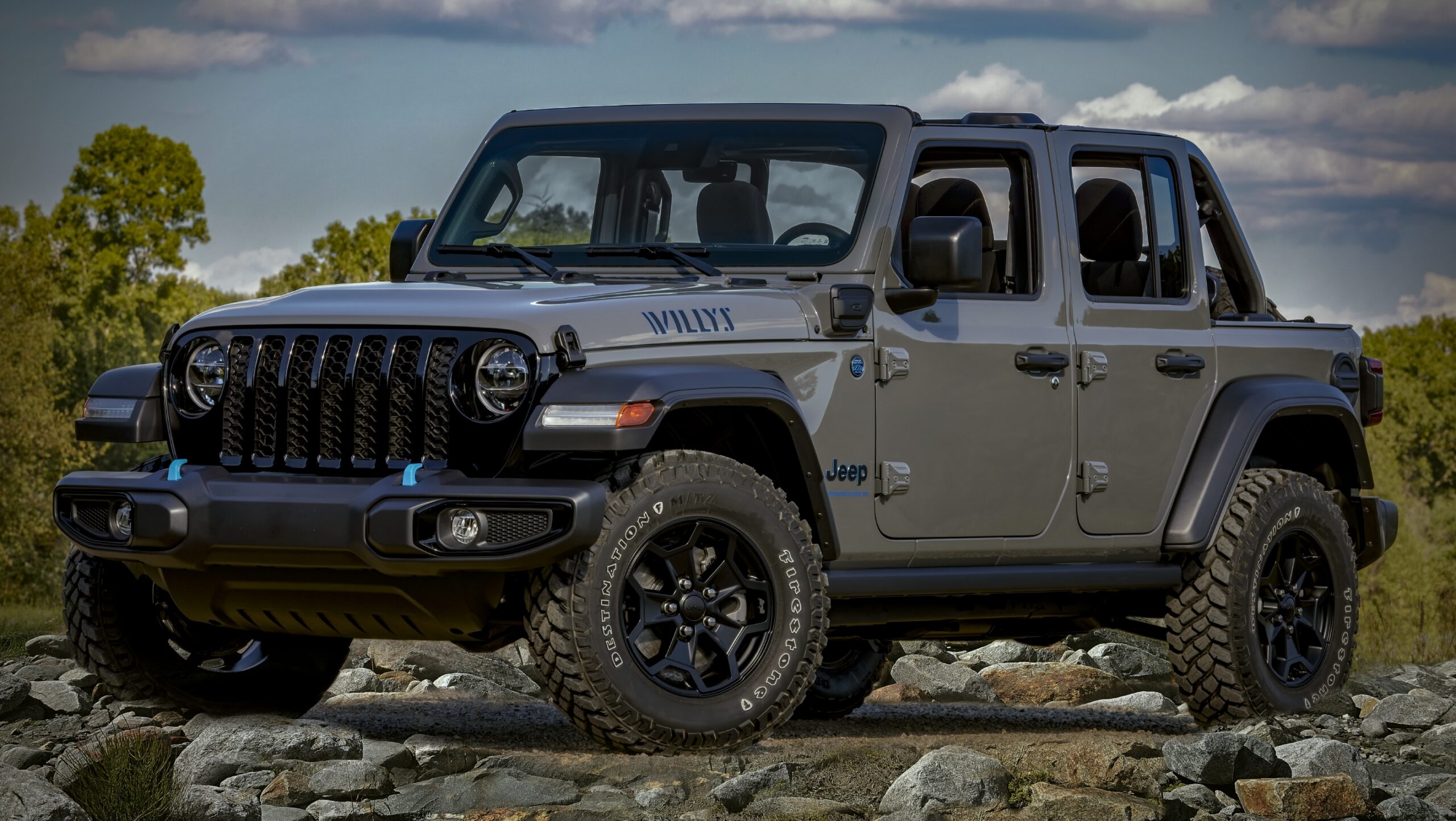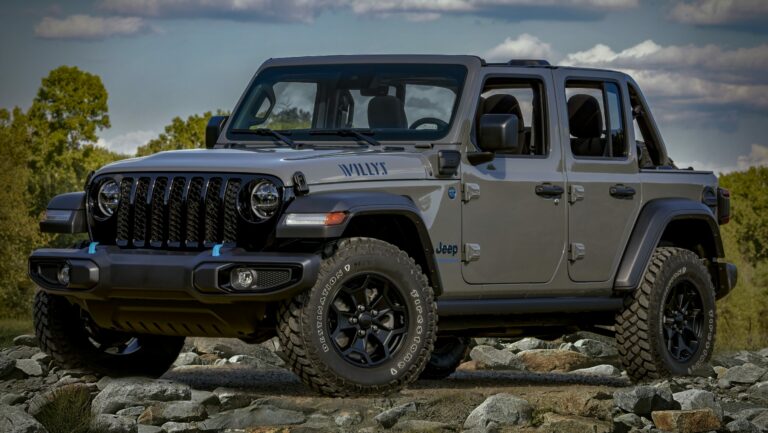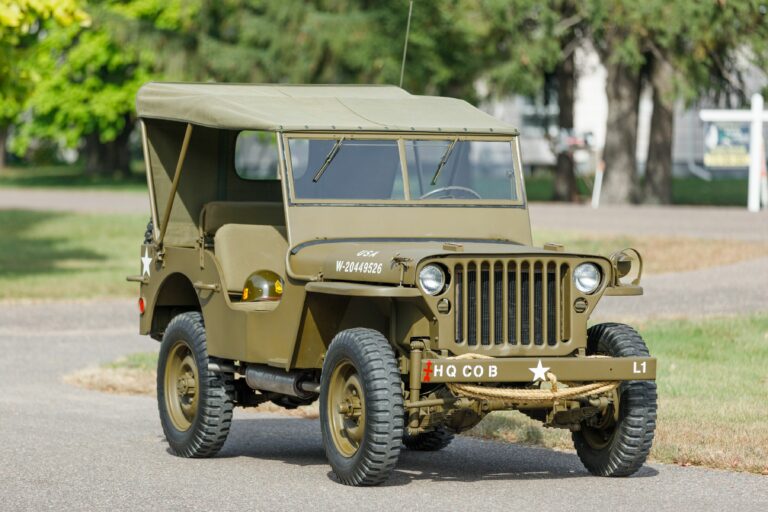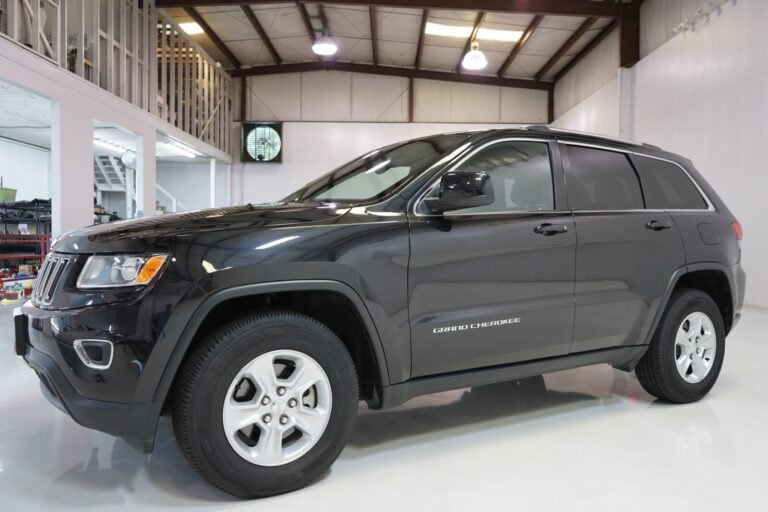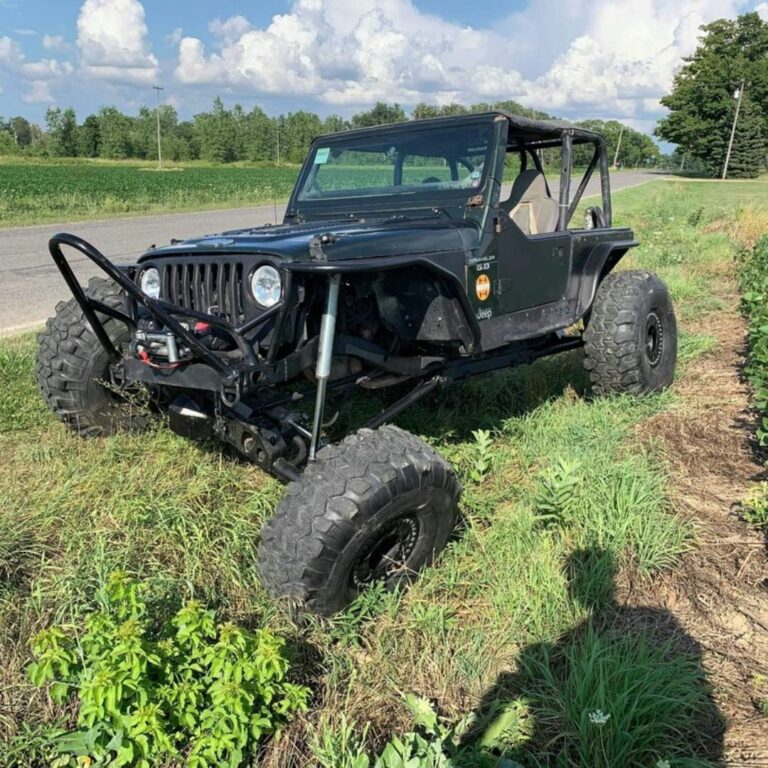Jeep Wrangler Dana 35 3.07 Ring and Pinion For Sale: Optimizing Your Ride
Jeep Wrangler Dana 35 3.07 Ring and Pinion For Sale: Optimizing Your Ride jeeps.truckstrend.com
The Jeep Wrangler, an icon of off-road adventure and rugged capability, often undergoes modifications to suit individual driving styles and terrain preferences. Among the most critical components for performance tuning are the differential’s ring and pinion gears. This comprehensive guide delves into the specifics of the Jeep Wrangler Dana 35 3.07 Ring and Pinion, exploring its significance, applications, and what you need to know if you’re considering this specific setup for your beloved Jeep.
Whether you’re looking to restore your vehicle’s original gearing, improve highway fuel economy, or compensate for modest tire size changes, understanding the 3.07 ratio within the context of the Dana 35 axle is paramount. This article aims to provide a detailed, informative, and practical resource for anyone interested in or actively seeking a Dana 35 3.07 ring and pinion set for their Jeep Wrangler.
Jeep Wrangler Dana 35 3.07 Ring and Pinion For Sale: Optimizing Your Ride
Understanding the Heart of Your Axle: Ring and Pinion Gears
At the core of your Jeep’s axle assembly lies the ring and pinion gear set. These two gears are responsible for transferring power from the driveshaft to the axle shafts, ultimately driving the wheels. The "gear ratio" (e.g., 3.07) represents the number of times the pinion gear rotates for every single rotation of the ring gear. A 3.07 ratio means the pinion turns 3.07 times for every one turn of the ring gear.
This ratio directly impacts your vehicle’s performance characteristics, including acceleration, top speed, and fuel efficiency. A "lower" (numerically higher) ratio like 4.10 or 4.88 provides more torque at the wheels, ideal for crawling and larger tires, but sacrifices top-end speed and fuel economy. Conversely, a "higher" (numerically lower) ratio like 3.07 offers better fuel economy and lower RPMs at highway speeds, suitable for smaller tires and more street-oriented driving.
The Dana 35 Axle in Jeep Wranglers: A Closer Look
The Dana 35 rear axle has been a staple in many Jeep Wrangler models, particularly the YJ (1987-1995) and TJ (1997-2006) series, and some XJ Cherokees. It’s known for its relatively lightweight design and adequate strength for stock or mildly modified applications. However, it’s also frequently cited as the weaker of the two common rear axles found in Wranglers (the other being the Dana 44, which is significantly stronger).
While the Dana 35 can handle moderate off-roading and tire sizes up to around 31-32 inches with caution, it’s generally not recommended for extreme rock crawling or oversized tires (33 inches and above) without significant upgrades like chromoly axle shafts or a super 35 kit. For those running stock or slightly larger tires and prioritizing daily drivability or light trail use, the Dana 35 with appropriate gearing can be perfectly suitable.
The Significance of the 3.07 Gear Ratio
The 3.07 gear ratio is one of the "taller" ratios offered from the factory in many Jeep Wranglers, especially those equipped with manual transmissions or smaller engine configurations (like the 2.5L 4-cylinder or early 4.0L I6s paired with specific transmissions).
![]()
What does 3.07 mean for your Jeep?
- Highway Efficiency: This ratio excels on the highway, allowing your engine to run at lower RPMs at cruising speeds. This translates directly to improved fuel economy and a quieter cabin experience, reducing engine noise and wear.
- Daily Driving: For Jeeps that spend most of their time on paved roads or light trails, the 3.07 provides a smooth, less aggressive feel, making it comfortable for daily commutes.
- Smaller Tire Compatibility: The 3.07 ratio is best suited for stock tire sizes (e.g., 28-30 inches) or very slightly larger tires (e.g., 31 inches) without significant performance degradation. If you’ve upgraded to much larger tires, a 3.07 ratio will make your Jeep feel sluggish and strain the engine and transmission.
- Original Equipment (OE) Restoration: Many owners looking to restore their vintage or classic Wranglers to original specifications will seek out the 3.07 ratio, as it was a common factory option.

It’s crucial to understand that while 3.07 offers benefits, it’s generally not the choice for serious off-road enthusiasts running large tires. For those applications, numerically higher ratios (like 3.73, 4.10, or even 4.56+) are preferred to restore lost power and optimize crawl speed.
Why Replace Your Ring and Pinion?
Several reasons might lead a Jeep owner to seek a new Dana 35 3.07 ring and pinion set:

- Wear and Tear: Over time, especially with high mileage or improper maintenance, differential gears can wear out, leading to excessive noise (whining, howling), vibration, or even failure.
- Damage: Off-road impacts, sudden shock loads, or manufacturing defects can damage gear teeth, necessitating replacement.
- Restoration to Stock Gearing: If a previous owner re-geared the Jeep to a different ratio (e.g., for larger tires) and you’ve returned to stock tire sizes or prefer the original highway performance, reverting to 3.07 is a common reason.
- Optimizing for Fuel Economy: For those primarily using their Jeep on the road and wanting to squeeze out every possible MPG, a 3.07 ratio can be a smart choice, especially if it was previously running a numerically higher ratio.
- Noise Issues: A poorly set up or worn gear set can create significant noise. Replacing it with a high-quality, properly installed 3.07 set can resolve these issues.
Key Considerations When Buying Dana 35 3.07 Ring and Pinion Sets
When you’re in the market for a Dana 35 3.07 ring and pinion, a few critical factors should guide your purchase:
- Manufacturer Reputation: Stick with reputable brands known for quality differential components. Brands like Dana Spicer (the OEM manufacturer), Yukon Gear & Axle, G2 Axle & Gear, and Revolution Gear & Axle are highly regarded for their precision manufacturing and durability.
- Material and Heat Treatment: Quality gears are made from high-grade steel and undergo precise heat treatment processes to ensure strength and longevity. Don’t compromise on cheaper, unknown brands, as they often lead to premature wear or failure.
- Master Install Kit: While you can buy just the ring and pinion, a "master install kit" is highly recommended. These kits typically include:
- Carrier bearings and races
- Pinion bearings and races
- Pinion seal
- Crush sleeve (or solid spacer kit)
- Shims (for proper setup)
- Gasket or RTV sealant
- Pinion nut
This kit provides all the necessary components for a complete and proper installation, ensuring long-term reliability.
- Compatibility: Double-check that the ring and pinion set is specifically designed for the Dana 35 axle. There are variations in Dana axles (e.g., Dana 30, Dana 44), and the parts are not interchangeable. Also, confirm the carrier break if you’re replacing the carrier, though 3.07 typically uses a "3.07 and down" carrier.
- New vs. Used: While used gear sets might be cheaper, they come with risks. Wear patterns are already established, and previous installation quality is unknown. For critical components like ring and pinion, new parts are almost always the safer and more reliable option.
Installation Process Overview: DIY vs. Professional
Installing a ring and pinion set is a highly precise and technical job that requires specialized tools and expertise. It’s not a job for the novice mechanic.
Key steps involve:
- Disassembling the axle and differential.
- Removing the old ring and pinion.
- Pressing new bearings onto the pinion and carrier.
- Setting the pinion depth using shims to achieve the correct pattern between the ring and pinion.
- Setting the pinion preload using a crush sleeve or solid spacer.
- Setting the backlash (the small gap between the teeth of the ring and pinion) using shims on the carrier.
- Setting the carrier bearing preload.
- Verifying the tooth contact pattern with marking compound.
- Reassembling the differential and axle.
DIY vs. Professional:
- DIY: Only attempt if you have extensive automotive differential experience, the proper tools (dial indicator, torque wrench, bearing press, setup bearings, pattern compound), and a service manual. Incorrect installation will lead to premature failure, noise, and costly repairs.
- Professional: For most owners, hiring a qualified differential specialist or an experienced off-road shop is the safest and most reliable option. They have the tools, knowledge, and experience to ensure a perfect setup, which is critical for longevity and quiet operation.
Practical Advice and Actionable Insights
- Verify Your Axle: Before purchasing, visually inspect your rear axle to confirm it’s indeed a Dana 35. Look for the "35" stamped on the axle housing or cover.
- Match Front and Rear Ratios: If your Jeep is 4WD, it is absolutely critical that the gear ratios in both the front and rear axles are identical (e.g., both 3.07). Running different ratios will cause severe drivetrain binding and damage when in 4WD.
- Consider a Master Install Kit: As mentioned, this simplifies the process and ensures you have all necessary components.
- Proper Break-in is Crucial: New gears require a specific break-in procedure to ensure proper seating and prevent premature wear or failure. This typically involves driving for short periods (e.g., 15-20 miles), allowing the differential to cool completely, and repeating this process several times before towing or heavy use. Always consult the manufacturer’s break-in recommendations.
- Use the Right Gear Oil: Always use the manufacturer-recommended gear oil, often a GL-5 rated fluid, and consider adding a limited-slip additive if your differential has a limited-slip unit.
Potential Challenges and Solutions
- Incorrect Installation: The biggest challenge. Solution: Have it professionally installed, or if DIY, follow instructions meticulously and verify all specs.
- Mismatched Components: Buying the wrong parts for your Dana 35. Solution: Double-check part numbers, consult with reputable suppliers, and verify your axle type.
- Noise After Installation: Often a sign of incorrect setup (bad pattern, too much/too little backlash, incorrect preload). Solution: Re-evaluate the setup, re-shim, or take it to a professional.
- Finding Specific 3.07 Ratios: While common from the factory, 3.07 is less frequently sought in the aftermarket compared to higher ratios. Solution: Check specialty Jeep parts retailers, differential component suppliers, and occasionally used parts forums.
Price Table: Jeep Wrangler Dana 35 3.07 Ring and Pinion For Sale
The prices for ring and pinion sets can vary based on brand, quality, and whether it’s just the gear set or a complete master install kit. Here’s an estimated price range for typical offerings:
| Product Type | Description | Estimated Price Range (USD) |
|---|---|---|
| Dana 35 3.07 Ring & Pinion Set (Only) | High-quality gear set (ring and pinion only) from reputable brands like Yukon, G2, Revolution, or Dana Spicer. | $180 – $280 |
| Dana 35 3.07 Master Install Kit | Includes ring & pinion, all necessary bearings, seals, shims, crush sleeve/spacer, and RTV/gasket. | $350 – $550 |
| Dana 35 3.07 Installation (Professional) | Labor cost for a qualified mechanic to install one differential (parts not included). | $350 – $600+ (per axle) |
| Used Dana 35 3.07 Ring & Pinion | Risky purchase; condition varies greatly. | $50 – $150 |
Note: Prices are estimates and can vary based on retailer, brand, sales, and regional labor rates.
Frequently Asked Questions (FAQ)
Q1: Is the Dana 35 3.07 ratio good for off-roading?
A1: The 3.07 ratio is considered a "tall" gear ratio, meaning it provides less torque multiplication. It’s generally not ideal for serious off-roading, especially with larger tires, as it will make your Jeep feel underpowered and strain the engine. It’s better suited for light trails and highway driving.
Q2: Will a 3.07 gear ratio improve my fuel economy?
A2: Yes, compared to numerically higher ratios (like 3.73, 4.10, etc.), the 3.07 ratio allows your engine to run at lower RPMs at highway speeds, which typically results in better fuel economy. However, if you’ve installed significantly larger tires, the engine will have to work harder, potentially negating the fuel economy benefit.
Q3: Can I install a 3.07 ring and pinion myself?
A3: Installing differential gears is a highly technical job requiring specialized tools and precise measurements (pinion depth, backlash, preload). Improper installation will lead to gear whine, premature wear, and costly failure. It’s strongly recommended to have it done by an experienced professional.
Q4: Do I need a new carrier for a 3.07 ratio in my Dana 35?
A4: The Dana 35 has different "carrier breaks" based on gear ratios. The 3.07 ratio typically falls into the "3.07 and numerically lower" or "2.73-3.07" range. If your current ratio is numerically higher (e.g., 3.73, 4.10), you would need a new carrier (or a thick gear set designed for the higher ratio carrier) to accommodate the 3.07 ring gear. Always verify carrier compatibility.
Q5: What’s the difference between a "ring and pinion set" and a "master install kit"?
A5: A "ring and pinion set" includes only the two gears themselves. A "master install kit" includes the ring and pinion set plus all the necessary bearings, seals, shims, crush sleeve/spacer, and RTV/gasket needed for a complete and proper installation. A master install kit is highly recommended for any gear swap.
Q6: How long do ring and pinion gears last?
A6: Properly installed and maintained ring and pinion gears can last for hundreds of thousands of miles. Improper installation, lack of maintenance, excessive shock loads, or running mismatched tire sizes can significantly shorten their lifespan.
Conclusion
The Jeep Wrangler Dana 35 3.07 Ring and Pinion setup, while not the choice for extreme off-roaders, holds significant value for specific applications. It represents an excellent option for those looking to restore factory performance, enhance highway fuel efficiency, or maintain a comfortable daily driving experience with stock or moderately sized tires.
Understanding the nuances of the Dana 35 axle, the implications of the 3.07 gear ratio, and the critical importance of proper installation are key to a successful upgrade or repair. By choosing quality components, considering a comprehensive master install kit, and entrusting the installation to experienced professionals, you can ensure your Jeep Wrangler performs optimally and reliably for years to come. Whether you’re refreshing an older model or fine-tuning your daily driver, the right gear ratio makes all the difference in unlocking your Jeep’s full potential.

